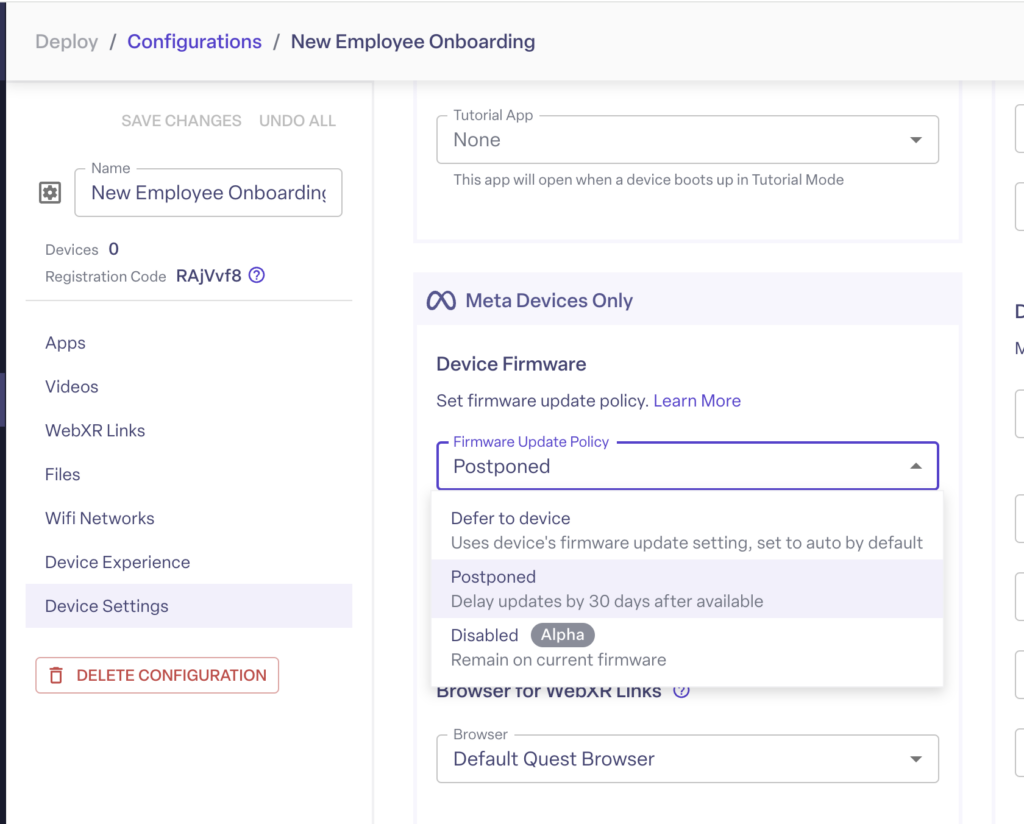Recently, we have been receiving lots of questions about firmware, and particularly about Meta Quest firmware. Before we dive in, let’s level set on what firmware is and why it matters.
Device firmware is your device’s operating system. It’s the bridge between the hardware and software of your VR device. Hardware manufacturers introduce firmware updates to enhance the performance, functionality, and security of devices.
However, if firmware updates are unexpected and untested, they can cause major problems, including bugs/crashes with your applications.
Why does firmware matter?
Whether you’re treating patients in clinical settings, running mission critical trainings, or using VR to drive sales, you need 100% certainty that devices will work exactly how you expect. When firmware updates unexpectedly, you risk losing that certainty and control.
For maximum stability and reliability when it counts, you should control the firmware of your device fleet.
Meta Quest Firmware Update Process
The firmware update process depends on your device type and device management solution.
Without a device management solution, device firmware is unmanaged. This means devices will automatically prompt users to update firmware when online or may auto-update without a prompt. Unmanaged firmware gives you little to no control over when and how many devices get updated.
Our firmware solutions aim is to provide stability by default, and empower you to choose how and when you want update. Our default settings maximize device stability and reliability, so you and your users experience a smooth, easy to use, and enjoyable VR experience.
Meta Quest Device Firmware
In order to maintain device stability, we created three new firmware update policies built specifically for Meta Quest devices. Not only do you get total peace of mind that your Meta Quest devices will work, but you also get to choose the policy that works for you!
The default setting on ManageXR for Meta Quest devices is called “Postponed.” This policy delays firmware updates for 30 days after a new firmware version becomes available (excluding security updates). We recommend using this as default to ensure that firmware versions have been tested and validated prior to pushing the upgrade to your entire fleet.

You can also choose from two other policy options:
- Defer to Device: Your devices will automatically upgrade whenever new firmware versions are available.
- Disabled: Lock each device onto the firmware version it currently has installed. We recommend this policy if you’re looking for maximum control, e.g., in a clinical trial, using devices with patients, or at a big event where you can’t take a chance on a firmware upgrade.
Learn more about ManageXR’s New Meta Quest Firmware Policies.
Best Practices for Updating Firmware
Test firmware before upgrading your fleet: Firmware upgrades cannot be rolled back, so always test firmware updates on a few headsets to ensure compatibility with your apps/content before wide deployment.
Lock firmware on stable versions: To prevent premature upgrades during firmware testing and validation, adjust your Configuration settings to keep devices on a stable firmware version.
Learn more how to get control of the firmware update process.
Conclusion
Managing device firmware is crucial for ensuring the stability and reliability of your VR devices, especially in sensitive environments like patient healthcare, critical operations, or high-value demonstrations. Firmware updates, if not controlled, can disrupt operations and compromise user experience. Gain control over your device’s firmware on ManageXR. Unlock the ability to test updates before wide deployment and lock devices onto stable versions. Whether you opt for automatic upgrades, postponed updates, or disabled upgrades, ManageXR empowers you to choose the firmware management strategy that best suits your needs, providing peace of mind and stability for your VR deployments.
